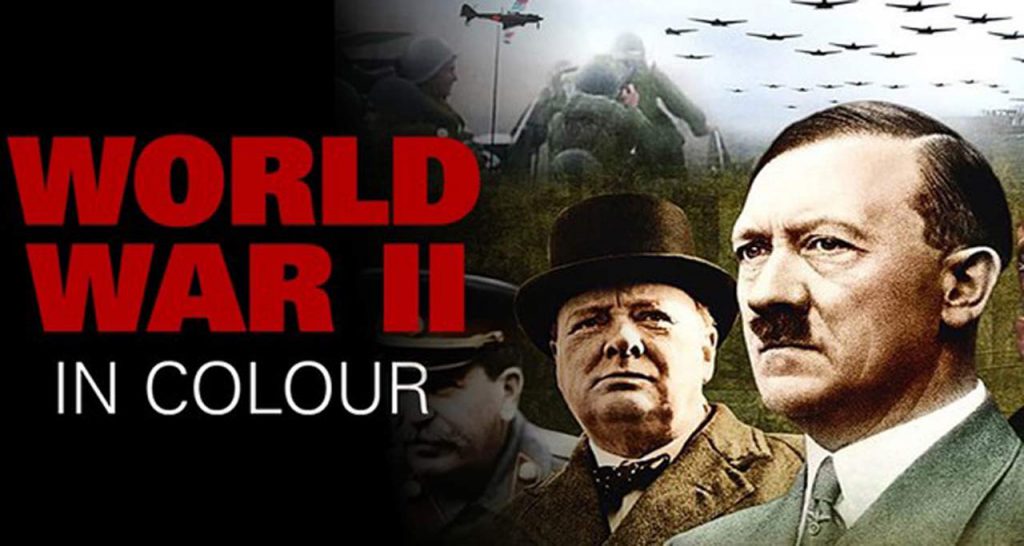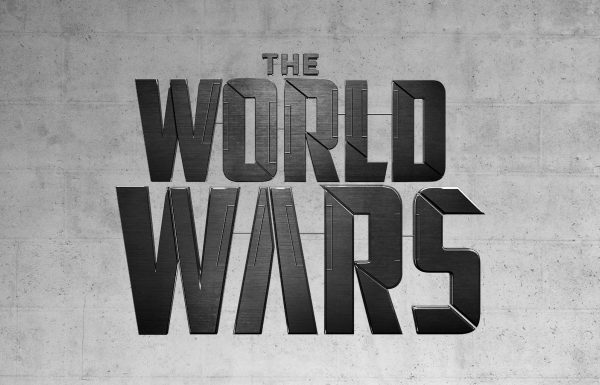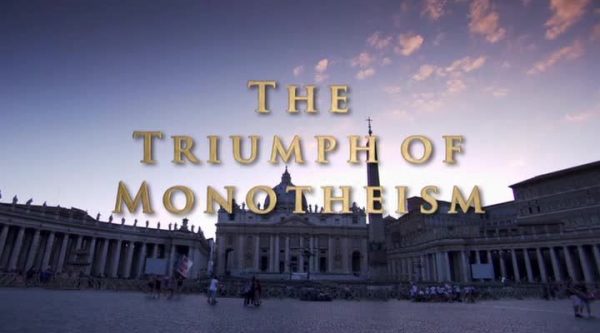World War II In HD Colour episode 9: Today it is easy to see D-Day as inevitable – a straightforward victory against a German army that was already all but defeated. This film explodes that myth. It charts the careful planning of the campaign, the development of specialised equipment needed for the amphibious landing. It reveals the deception plan that wrong footed Hitler. It shows how the Americans were very nearly driven off Omaha beach. If that had happened, the whole operation might have failed. The film ends with the Liberation of Paris, as the Free French forces led by Charles de Gaulle matched down the streets of the capital.
This film tells the extraordinary story of the war in North Africa and features the heroics of the tiny island of Malta as it withstood wave after wave of Nazi assault. It ends with the Allies fighting their way up Italy and Germany in retreat. World War II in Colour is a 13-episode British television docuseries recounting the major events of World War II narrated by Robert Powell. It was first broadcast in 2008–2009. The series is in full colour, combining both original and colourized footage. The show covers the Western Front, Eastern Front, North African Campaign and the Pacific War. It was on syndication in the United States on the Military Channel.
World War II In HD Colour episode 9
D-Day
D-Day, also known as the Normandy Landings, was a pivotal moment in World War II. On June 6, 1944, Allied forces launched a massive amphibious invasion of Nazi-occupied France. The operation was known as “Operation Overlord” and was the largest seaborne invasion in history. Here are some key facts about D-Day:
- The invasion was planned and executed by General Dwight D. Eisenhower, who would later become the 34th President of the United States.
- Over 156,000 American, British, and Canadian troops were involved in the operation, which was supported by over 5,000 ships and 13,000 aircraft.
- The initial landings took place on five beaches in Normandy, France: Utah, Omaha, Gold, Juno, and Sword.
- The landing at Omaha Beach was particularly brutal, with many soldiers losing their lives in the intense fighting. However, the bravery of American soldiers eventually led to the successful capture of the beachhead.
- The landing at Utah Beach was also challenging, but the American troops were able to secure the beach and link up with paratroopers who had been dropped behind enemy lines.
- In addition to the landings, over 23,000 paratroopers were dropped behind enemy lines to disrupt German defenses and secure key objectives.
- The success of D-Day was critical in the liberation of France and the eventual defeat of Nazi Germany.
- The battle was not without its casualties, with an estimated 4,414 Allied troops losing their lives on D-Day.
- D-Day marked the beginning of the liberation of Western Europe and was a turning point in World War II. The operation allowed the Allies to establish a foothold in France and begin their march towards Germany.
- The bravery and sacrifice of the soldiers who participated in D-Day will never be forgotten, and their legacy continues to inspire future generations.
D-Day was a defining moment in world history and a testament to the bravery and sacrifice of the soldiers who took part in the operation. The successful invasion of Normandy allowed the Allies to establish a foothold in Western Europe and ultimately bring an end to World War II. The memory of D-Day will always serve as a reminder of the sacrifices made by those who fought to defend freedom and liberty.
Liberation of Paris
The Liberation of Paris was a major event in the final stages of World War II in Europe. On August 25, 1944, after four years of Nazi occupation, Paris was finally freed by the Allied forces. This event marked the end of the German occupation and the restoration of French sovereignty, and it was met with widespread joy and celebration among the city’s residents.
The liberation of Paris was the result of a combined effort by the French Resistance and the Allied forces, who had been advancing towards the city from Normandy. The German occupiers, led by General Dietrich von Choltitz, had been preparing to destroy the city, including its famous landmarks, in the event of an Allied invasion. However, the Germans were eventually forced to surrender without resistance, and the city was liberated with minimal damage.
The liberation of Paris was a significant moment in French and World War II history. It marked the end of the German occupation and the restoration of French sovereignty, and it was a symbol of the resistance and resilience of the French people, who had suffered greatly during the occupation. The city’s residents took to the streets to welcome the Allied troops, and General Charles de Gaulle, the leader of the Free French movement, made a historic speech from the balcony of City Hall, declaring the liberation of Paris and the reestablishment of the French Republic.
The liberation of Paris was also a turning point for the Allied forces, as it provided a major boost to morale and momentum in the final stages of the war. It was a demonstration of the strength and cooperation of the Allies, who had worked together to defeat the German occupation of France. The liberation of Paris marked the beginning of the end of the war in Europe, as the Allies continued to push towards Germany and the eventual defeat of Nazi forces.
The memory of the liberation of Paris remains an important part of French and World War II history. Each year, the events of August 25, 1944 are commemorated with a military parade and various other ceremonies. The liberation of Paris remains a symbol of hope and resilience, and its memory continues to inspire future generations.




